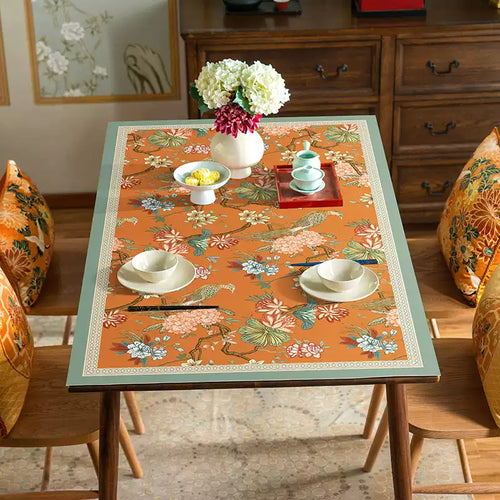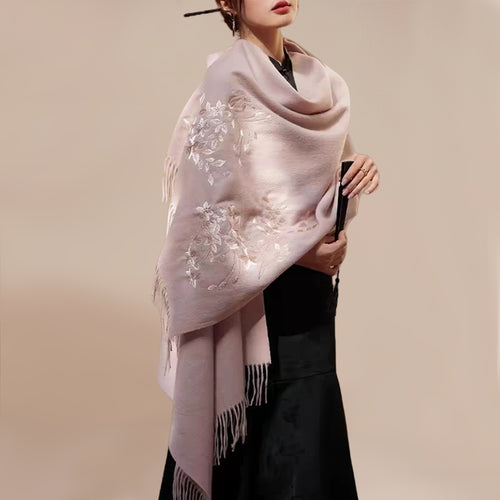Cantonese Embroidery, also known as Yue Embroidery or Guangdong Embroidery, is a general term for the hand-stitched silk embroidery of Guangdong Province. Yue Embroidery includes two major branches: Chao Embroidery and Guang Embroidery. It is a folk embroidery craft traditionally practiced in Guangzhou and its ancient territories, including Nanhai, Panyu, and Shunde. The history of Yue Embroidery dates back to before the Tang Dynasty, with over 1,000 years of heritage. In 2006, it was listed as a national intangible cultural heritage of China.
Yue Embroidery is characterized by its meticulous and rich compositions and bright, vibrant colors, particularly notable for the "liushuilu" technique (leaving a fine line unstitched at the intersections and overlaps of patterns).

In the ninth year of the Ming Zhengde period (1514), a Portuguese merchant purchased a piece of dragon robe embroidery in Guangzhou and presented it to his king, earning great rewards. This event brought international fame to Yue Embroidery. The British royal family greatly admired gold and silver embroidery. Queen Elizabeth I founded the Worshipful Company of Embroiderers, and King Charles I promoted the spread of Yue Embroidery art across the British Isles, making Yue Embroidery "China's gift to the West." Museums in the United Kingdom, France, Germany, and the United States all have collections of Yue Embroidery.

Guang Embroidery is known for its elegance, featuring a subdued color palette and the use of flat gold thread techniques, often with appropriate padding.
Chao Embroidery, on the other hand, focuses on striking visual effects with vibrant colors. It employs various techniques such as nailing, padding, applique, and patchwork, creating embroidery pieces that resemble bas-reliefs.

Highlights of Yue Embroidery
1. Thread:
A variety of threads are used in Yue Embroidery. In addition to silk and wool threads, peacock feathers twisted into threads and horsehair wrapped with wool are also used. These methods were documented in the late Ming and early Qing dynasties in "Guangdong Xinyu."

2. Color:
Yue Embroidery often uses bold and bright colors such as red and green. Through skillful outlining, the colors become rich and splendid without appearing vulgar, achieving an overall artistic effect that is both magnificent and elegant.

3. Gold:
Gold thread is used extensively in Yue Embroidery. It is employed to outline the entire pattern, then layered with gold and silver threads. This technique evolved into unique styles such as gold nail embroidery and gold and silver thread embroidery. The high-relief gold velvet embroidery, which is luxurious and imposing, is particularly popular.

4. Complexity:
The decorative patterns in Yue Embroidery are intricate and abundant. However, its unique composition method ensures that the complexity does not result in chaos. This approach infuses the work with a lively and joyful atmosphere, often seen in themes like "A Hundred Birds Paying Homage to the Phoenix" or "Peacock Displaying Its Feathers," highlighting the regional characteristics.

Two Unique Aspects of Yue Embroidery
1. Predominantly Male Embroiderers:
In ancient times, male embroiderers in Guangzhou were commonly known as "hua lao" (花佬). There is a saying in the folk tradition that refers to "three thousand hua lao."
2. Striking from a Distance, Intricate Up Close:
Yue Embroidery boasts the "eighteen skills" that ensure clear texture. The needlework techniques of Yue Embroidery include 7 major categories with a total of 28 specific types, such as straight twisting stitch, bundled bite stitch, and continuation insertion stitch. Additionally, there are techniques for gold and silver thread embroidery, as well as six major categories with 12 techniques including flat embroidery, brocade weaving, braid embroidery, and relief embroidery.








































